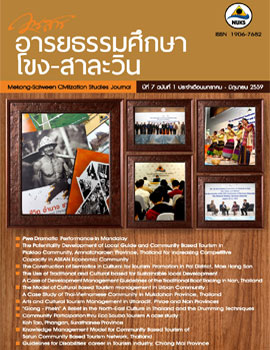Arts and Cultural Tourism Management in Uttaradit, Phrae and Nan Provinces
Main Article Content
Abstract
The main purpose of this research was to study arts and cultural tourism in Uttaradit, Phare and Nan provinces. The research was conducted using Qualitative and Quantitative Methods. The proposed objectives were;
1) To define management model of the community’s arts and
cultural tourism which consisted of 114 attraction sites divided into
4 groups of 48 temples, 13 museums, 25 art and craft centers and 24
attraction sites and accommodations. At present, the functions of these
places are limited to being cultural learning centers rather than the
actual site of arts and cultural tourism.
2) To develop a new management model and travel routes by
focusing on arts and cultural tourism under the concept of
“Culdutainments” which conceptualizes the gratification of cultural
learnings. “Culdutainment” is collaboration of all relevant components
and stakeholders on the complimentary basis which believed to deliver
a sustainable tourism management. Furthermore, a total of 9 arts and
cultural travel routes were considered under the theme of “Charms
of East Lanna’s Handicraft.
3) To propose suggestions regarding policy which empowering
the development of arts and cultural tourism model, attractive and
distinctive new travel routes. This step involved 4 developmental
platforms, 10 strategies, and 20 working schemes.


